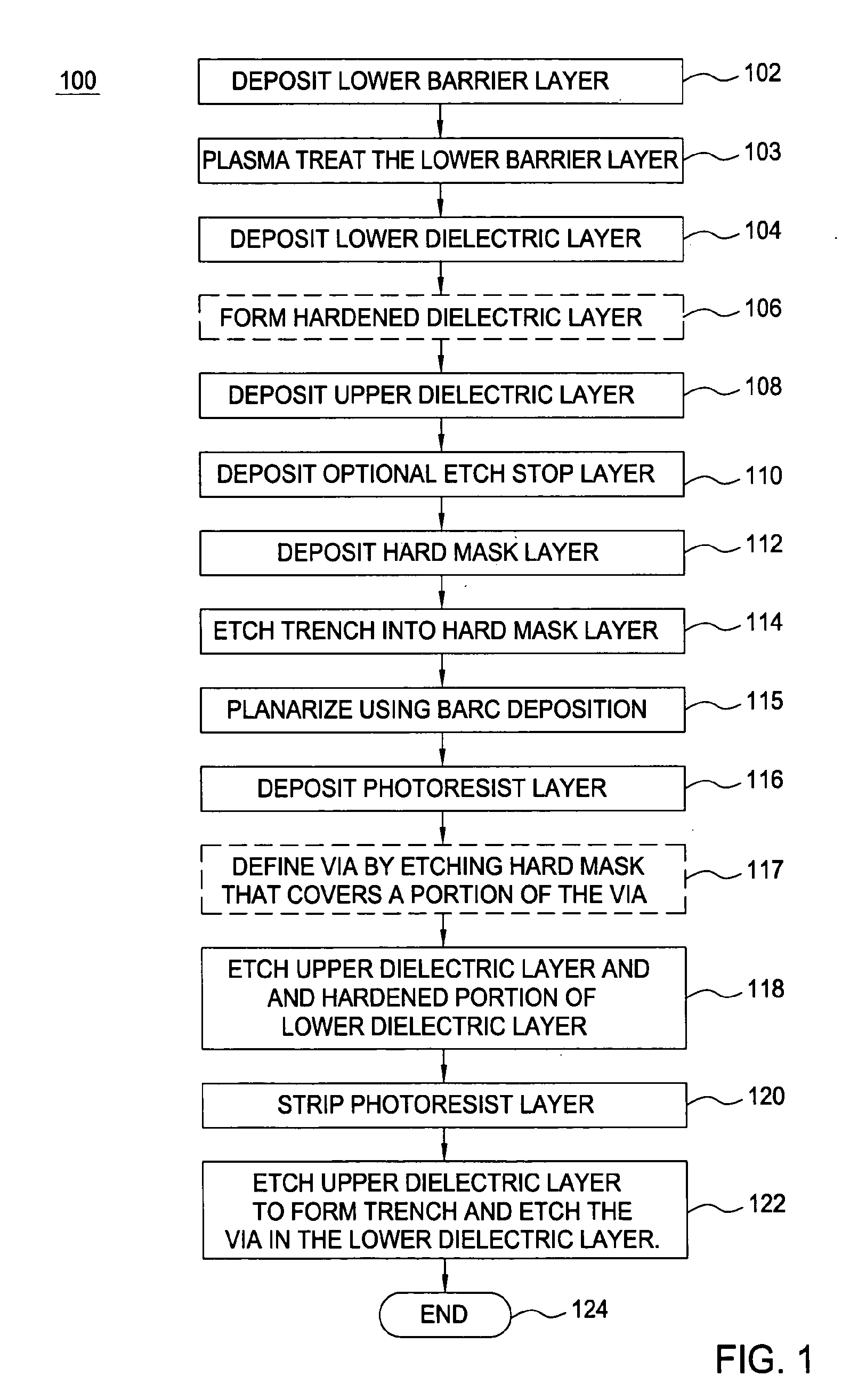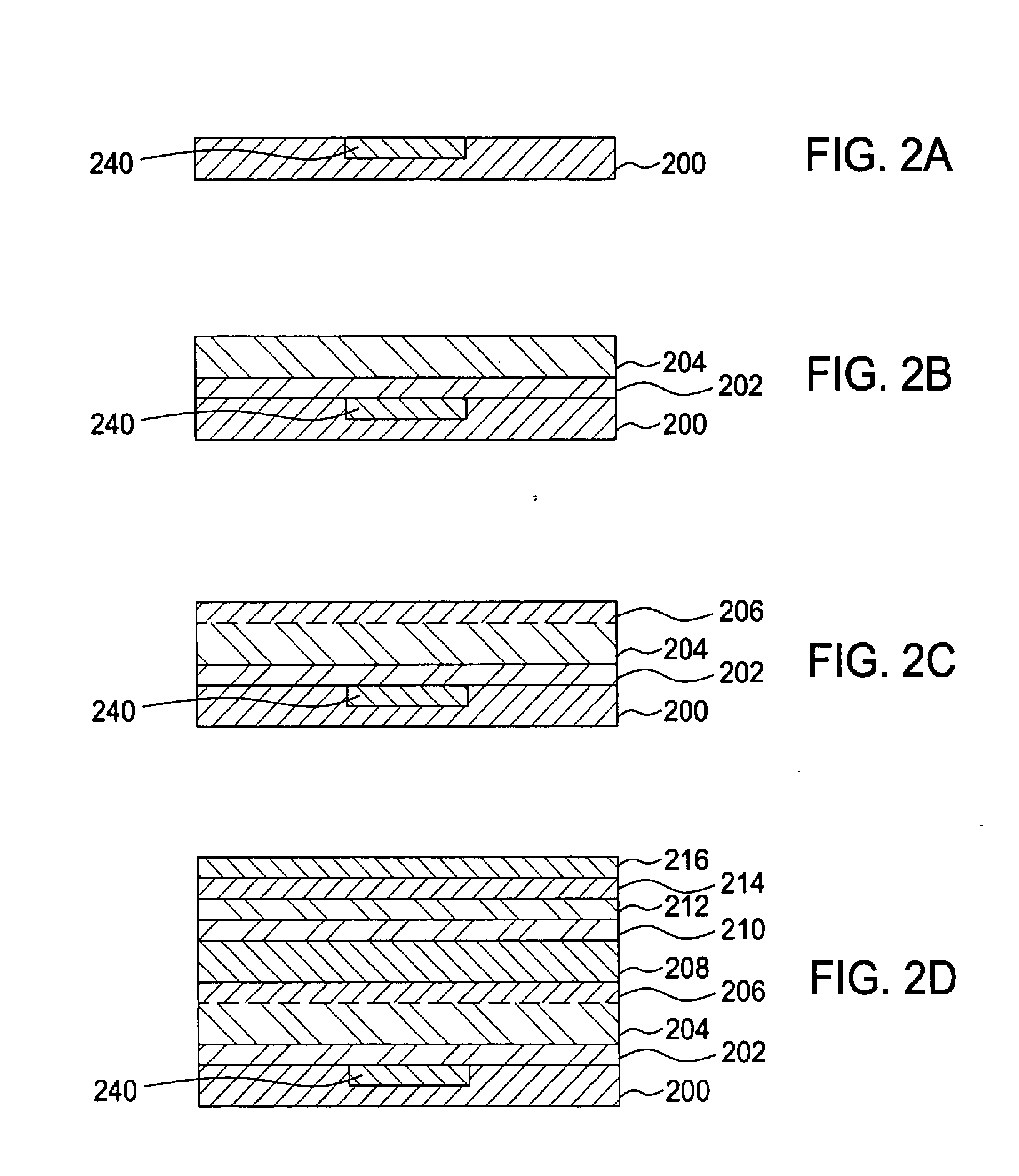Method of forming a low-k dual damascene interconnect structure
a damascene and interconnecting structure technology, applied in the direction of basic electric elements, semiconductor/solid-state device manufacturing, electric apparatus, etc., can solve the problems of difficult processing of low-k dielectric materials, complex integrated circuits, and complex devices, so as to improve the adhesion of the structure
- Summary
- Abstract
- Description
- Claims
- Application Information
AI Technical Summary
Benefits of technology
Problems solved by technology
Method used
Image
Examples
Embodiment Construction
[0020]The present invention relates to a method of etching a low K dielectric material and, in particular, to fabricating a dual damascene interconnect structure comprising dielectric materials having lower dielectric constants (low K). The structure is formed by etching a via in an upper low K dielectric layer and into a hardened portion of a lower low K dielectric layer, then simultaneously etch a trench in the upper low K dielectric layer and a via in the lower low K dielectric layer. The hardened portion forms a mask for the via and a hard mask forms a mask for the trench. In one embodiment, adhesion of the structure to underlying layer(s) is improved by plasma treating a barrier layer for the structure.
[0021]FIG. 1 depicts a sequence 100 of method steps that may be used to form a low-K dual damascene structure according to one embodiment of the invention. The sequence 100 comprises depositing a lower barrier layer on a substrate (step 102), plasma treating the lower barrier lay...
PUM
| Property | Measurement | Unit |
|---|---|---|
| dielectric constant | aaaaa | aaaaa |
| pressure | aaaaa | aaaaa |
| temperature | aaaaa | aaaaa |
Abstract
Description
Claims
Application Information
 Login to View More
Login to View More - R&D
- Intellectual Property
- Life Sciences
- Materials
- Tech Scout
- Unparalleled Data Quality
- Higher Quality Content
- 60% Fewer Hallucinations
Browse by: Latest US Patents, China's latest patents, Technical Efficacy Thesaurus, Application Domain, Technology Topic, Popular Technical Reports.
© 2025 PatSnap. All rights reserved.Legal|Privacy policy|Modern Slavery Act Transparency Statement|Sitemap|About US| Contact US: help@patsnap.com



